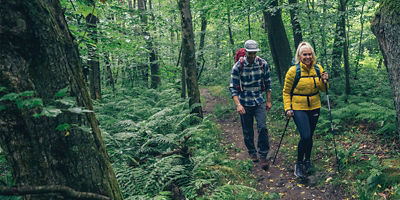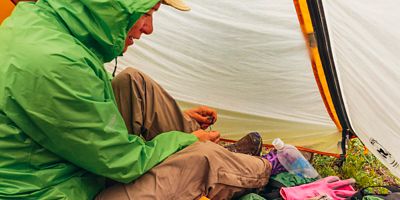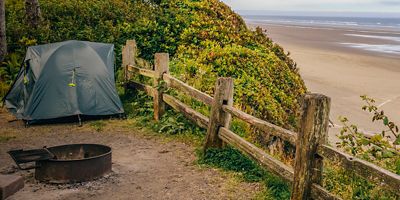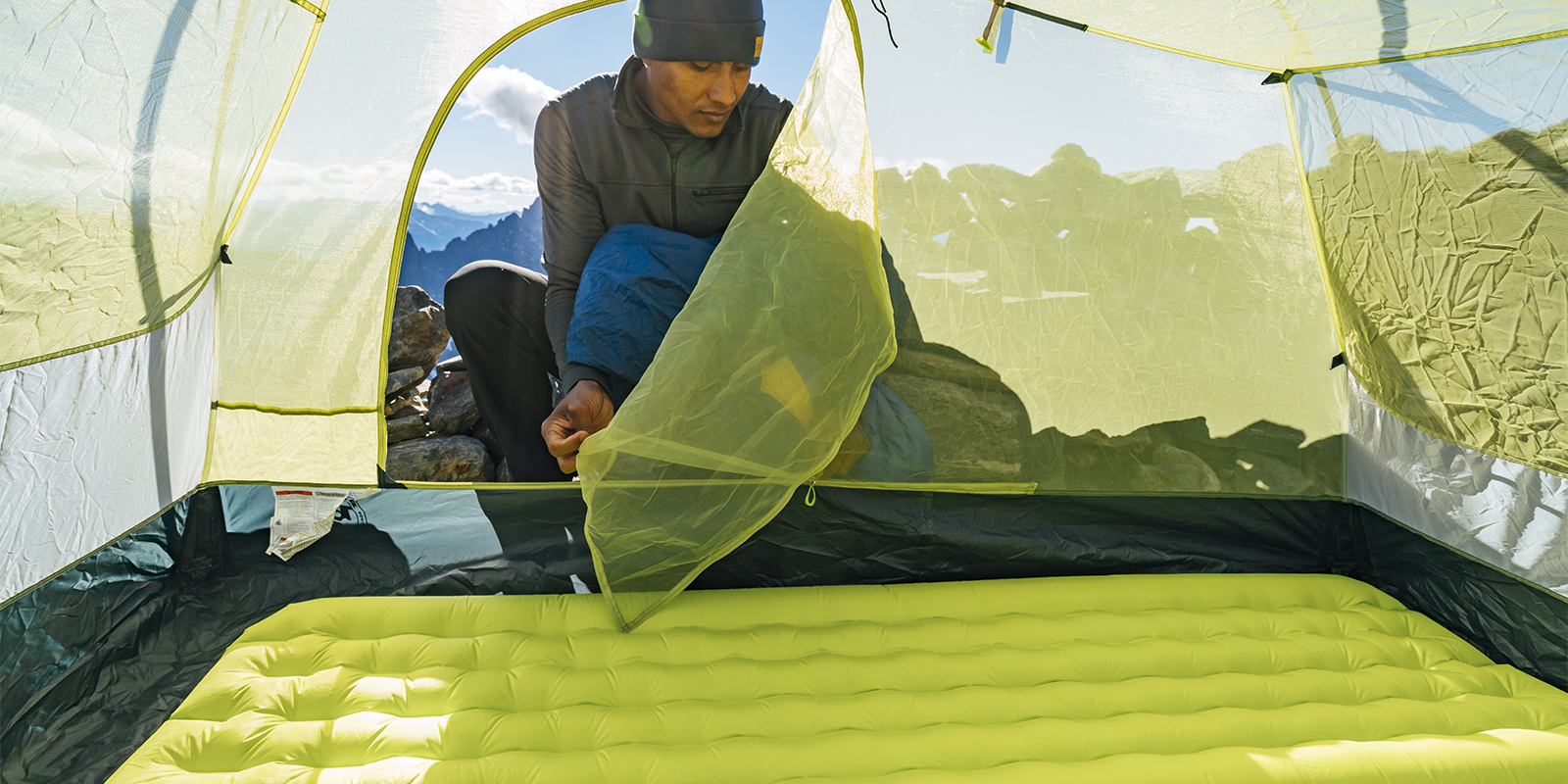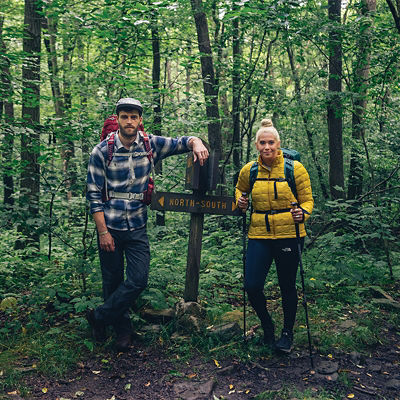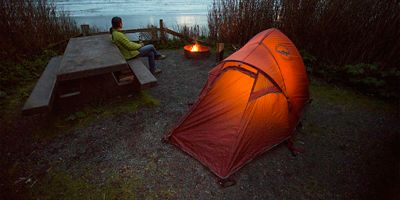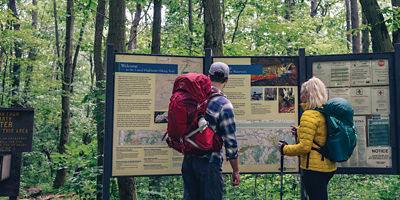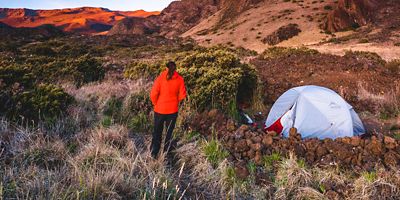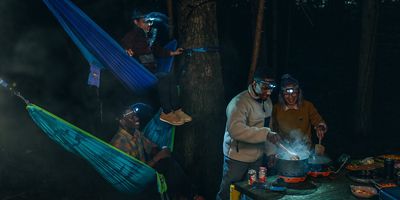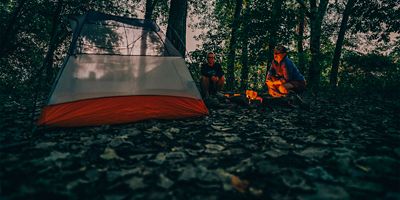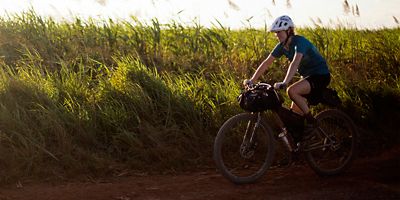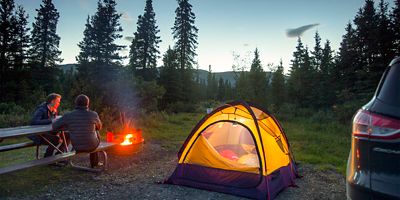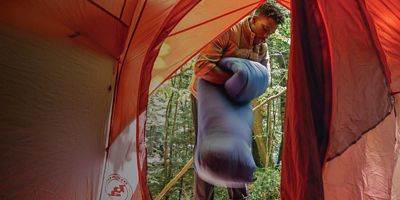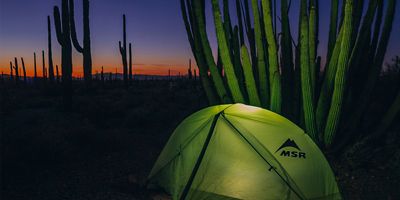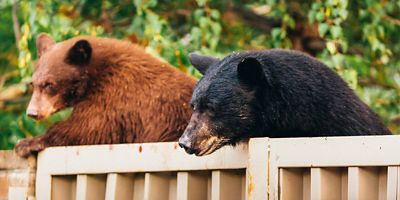
Wake up to views of the sunrise over crystalline waters—all without having to get out of bed. The primitive campsites at Garden Key Campground are located on a 14-acre island inside Dry Tortugas National Park, a remote park that sits 70 miles west of Key West and is only accessible by private boat or ferry. Think: palm trees, white sand beneath your feet, and sweeping water views over the Gulf of Mexico.
Less than 1% of Dry Tortugas is dry land, so the best way to explore its coral reefs, marine life and shipwrecks is by getting on the water. Swimming, snorkeling, paddling, and fishing are the best activities to maximize time on Garden Key. And since there are only 10 sites at the campground, and no other lodging on the island, it’s basically like having your own private island for a night or two.
Best Campsites
There’s no such thing as a bad site at Garden Key Campground. They’re nestled between the 19th-century Fort Jefferson (built after the War of 1812 to protect the U.S. southern coast) and the Gulf’s dreamy blue-green waters. Just a short walk from the island’s dock, each of the eight first-come, first-served regular sites can accommodate three two-person tents (total of six people). There’s also a group campsite (room for 12-15 tents) that you can reserve ahead of time. But don’t expect much more; the campground has no public showers, concessions, or other amenities beyond composting toilets, picnic tables, and grills for charcoal fires (what more do you need with this view?). Regular sites are $15/night and the group site is $30/night.
Seasons
Hurricane season generally lasts from early June to late November, but that doesn’t mean you should avoid visiting then; the summer months are warmer with clearer skies and calmer winds. But spring makes a strong case, too, with pleasant temps often in the 70s and 80s from late March to May—and less visitors as well. Don’t count winter out, either. Yes, there’s occasionally poor weather (even though low temps only drop to the 60s), but it’s a pleasantly quiet time on the island. No matter what season you plan to visit Dry Tortugas, make sure you check detailed weather forecasts before departing.
Supplies
Since the island is remote without a store to pick up a forgotten essential, you’ll need to arrive prepared. There are plenty of grocery and outdoor shops in Key West (where you’ll catch the ferry from) to grab any last-minute necessities. Tents are mandatory when camping on the island, and the park service recommends that each person bring two gallons of water per day. Don’t forget trash bags! All trash must be carried off the island when you leave. Pro tip: The ferry doesn’t allow compressed gas canisters onboard, so bring charcoal, a lighter, and waterproof matches. Be sure to bring your food in hard-sided containers to keep the rats (and crabs!) from getting to them. There are hooks to keep food and other items off the ground (just don’t store any food in your tent). You’ll want sun gear, rain gear, and bug gear as well.






